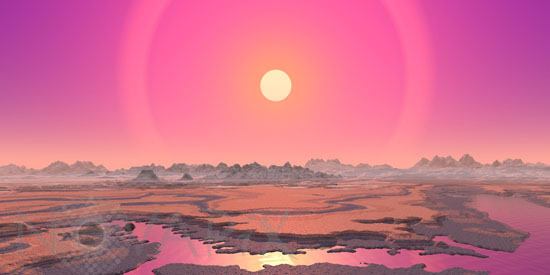Photo Agency - Astronomy - Space - Nature

A dying star sheds its outer layers
author: Walter B. Myers/Novapix
reference: a-exo99-30062
Image Size 300 DPI: 42 * 21 cm
When a star like our sun nears the end of its life, it expands to more than 50 times its original diameter, becoming a red giant. Then over the next several tens of thousands of years the star episodically ejects its outer layers into space, sometimes producing concentric shells. These ejected layers eventually form a planetary nebula. What will subsequently remain of the star is a small, extremely hot core which cools off to become a white dwarf.
In this image a red giant star expels its first of many shells of gas into space. In the years to come this spherical shell will grow outward, its circumference eventually expanding far beyond the orbit of this planet.
As for this planet, being so far from its parent sun for most of its life has kept it in a deep, dark freeze for the past ten billion years (think Pluto). It has been during only the past 100 million years, when its sun first blossomed into a red giant, that this planet has experienced such light and warmth. This effluence is short-lived, however; in about another million years darkness and cold will again be the norm for this world.
Keywords for this photo:
ASTRONOMY - END OF EARTH - EVOLUTION - EXOPLANET - EXTRASOLAR PLANET - ILLUSTRATION - PLANET - RED GIANT - STAR -
Contact : Stéphane Aubin +33-(0)9-51-26-53-76
© Novapix - All rights reserved


